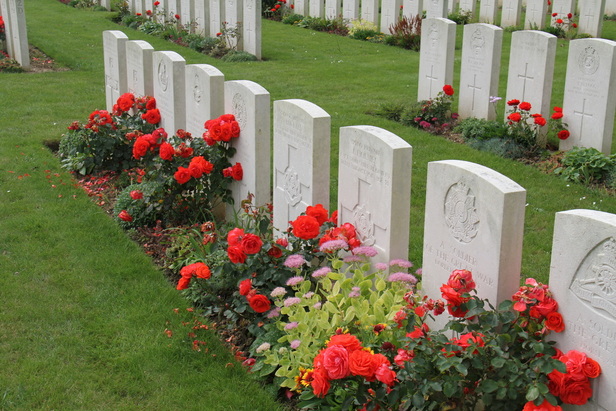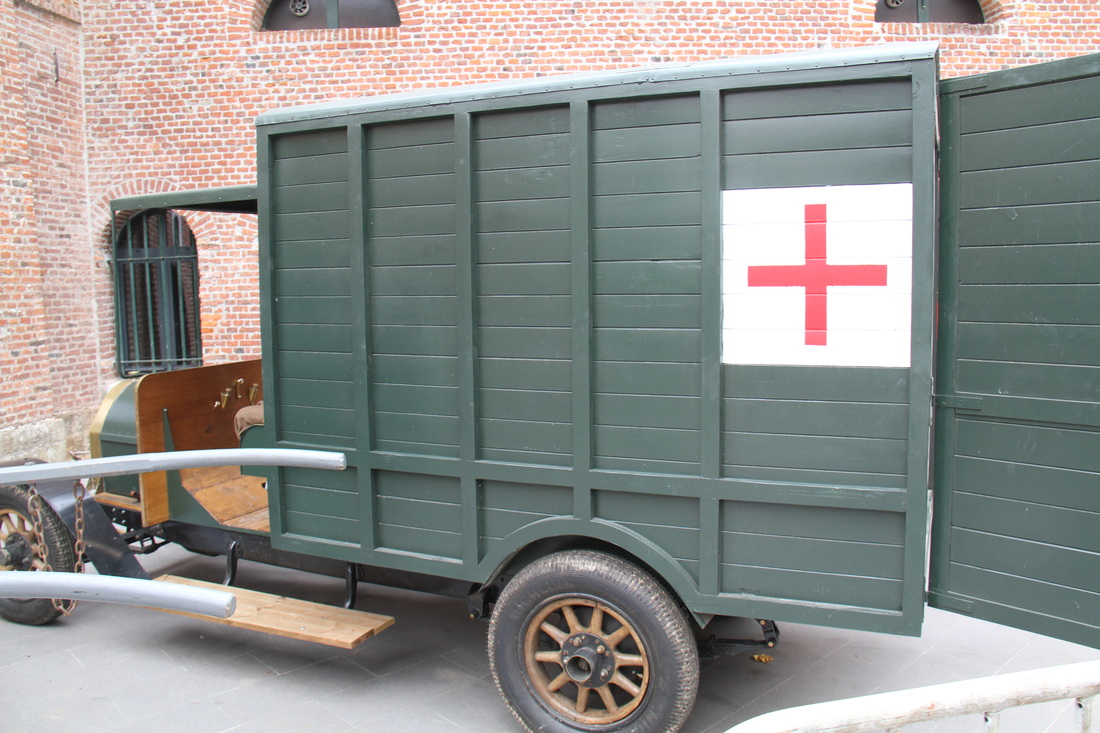Wikipedia, Public Domain, Original in Biblioththeque National de France
(Make-shift trenches served as protection during the opening days of the war; later the trenches were much deeper.)

As I mentioned in a previous post (August 10, 2014) Aldrich was an American reporter, who had recently retired to the little village of Huiry, about 35 miles from Paris, after more than a decade as a journalist in the big city. She expected to find in her new home a “quiet retreat” for the final years of her life. Instead, at the beginning of September, 1914, she discovered herself on the edge of one of the great battles of World War I.
On August 17, 1914, she wrote “I have Belgium on my soul.” Germany had invaded neutral Belgium, disregarding treaties guaranteeing the integrity of the country’s boundaries. When Belgians resisted, Germany destroyed their fortifications with the most powerful cannons the world had ever seen. When citizens fired from buildings on invading troops, the Germans rounded up thousands of men, women, and children and killed them on the spot. Soon afterwards they entered France.
“All the time,” Aldrich wrote, “my heart is out there in the northeast. It is not my country, nor my war—yet I feel as if it were both.”
But the war for Mildred Aldrich was less the big stories in the news than the immediate events near her home in France. She reckoned that her friends in the United States knew more about the war than she did, due to censorship in France.
The Germans had swept through Belgium, that she knew, and they were marching into northern France, fighting a series of battles along the frontier. She had not yet heard the cannons roar, nor seen soldiers in her village, but other local events showed the impact of the impending war. Mobilization had taken the able-bodied men away from her village, and old men, women, and children were replacing the departed men in shops and fields. The bakers were gone, and so women were baking the bread: it was “not yet very good.”
Aldrich’s servant Amélie and her seventy-some year old husband went to work in the fields at three in morning. The local blacksmith, “lame with rheumatism” limped up the hill to the fields with his “white-haired wife carrying the lunch basket.”
On August 24 Aldrich made a trip to Paris. Most seats on the trains were occupied by soldiers, but a few were available to civilians. On the short trip into the city she saw signs of war: wire “entanglements” protecting the “outer fortifications” of Paris, “miles and miles” of trains marked with the Red Cross, and lines of trucks pulling ammunition wagons and cannons.
We were being constantly held up, Aldrich wrote, to let trainloads of soldiers and horses pass. In the station we saw a long train being made up of men going to some point on the line to join their regiments….They were in their working clothes, many of them almost in rags, each carrying in a bundle, or a twine bag, his few belongings, and some of them with a loaf of bread under the arm. It looked as little martial as possible but for the stern look in the eyes of even the commonest of them. I waited on the platform to see the train pull out. There was no one to see these men off…. I remembered the remark of the woman regarding her husband when she saw him go: "After all, I am only his wife. France is his mother.”
Nothing going on here except the passing now and then of a long line of Paris street busses on the way to the front. They are all mobilized and going as heroically to the front as if they were human, and going to get smashed up just the same. It does give me a queer sensation to see them climbing this hill. The little Montmartre-Saint-Pierre bus, that climbs up the hill to the funicular in front of Sacre-Coeur, came up the hill bravely. It was built to climb a hill. But the Bastille-Madeleine and the Ternes-Fille de Calvaine, and Saint-Sulpice-Villette just groaned and panted and had to have their traction changed every few steps. I thought they would never get up, but they did.
Another day it was the automobile delivery wagons of the Louvre, the Bon Marche, the Printemps, Petit-Saint-Thomas, La Belle Jardiniere, Potin —all the automobiles with which you are so familiar in the streets of Paris. Of course those are much lighter, and came up bravely. As a rule they are all loaded.
Many of the visitors were impressed that an elderly American woman abided in her little house so close to the invaders. One confided to her that if the Germans came too close, they would have to fire over her house from higher ground. In that case, the Germans would fire back and likely destroy her home.
Then one day she heard a series of tremendous explosions and learned that the British were destroying the bridges across the nearby Marne River as they retreated.
Photo by Bill Youngs, 1987
I had been reading Mildred Aldrich’s account of these events a few days before arriving in France. My first destination was Marne valley near Aldrich’s house on the hilltop. Beside an avenue of trees near the town of Villeroy, I stopped the car and looked and looked at the trees and the fields.
Nothing concrete drew one back into history there. But the very silence of the fields and the wind in the trees evoked for me the mystery of time: here in this very region, exactly 100 years before, the air was filled with bullets and shells, and men were dying by the thousands; the Germans were pressing to reach Paris, and the French and British were trying desperately to deny them entry.
Here are those fields:
I am now in Amiens, visiting with Jean and Christiane Vimeux, the French grandparents of my Franco-American granddaughters, Margot and Charlotte. During the past few years Jean and I have made several trips to visit monuments and cemetaries of the great war. Yesterday, during this week in which France is remembering the 1914 Battle of the Marne, we visited several graveyards from the Great War. These memorials take us ahead in time to the 1920s when the world sought to heal the gruesome losses of the war by building some of the most beautiful grave sites in the world. Here is one, for example.
In this my French Grandfather-Counterpart, Jean Vimeux, is studying grave markers.
Two other artifacts of the past, on exhibit in Peronne, reminded us of the war itself.
This is one of the few surviving "Paris Taxis" of 1914 that rushed soldiers to the front during the Marne battle:
And here was one of the ambulances that carried the broken bodies of the wounded back from the front:
Stay tuned.
Click here to view more entries on the American Realities blog...
(You know you want to!)
If you enjoyed this article on World War I, you might also enjoy these entries:
• August 10, 1914: "It is as if all France is holding it's breath...."
• "Over There": World War I Veterans Sing Songs of the Great War, 67 Years Later
• Memories of the Lafayette Escadrille at the American Cathedral in Paris
• The Outbreak of the Great War, My Grandfather's Diary, and an Elephant Ride










 RSS Feed
RSS Feed